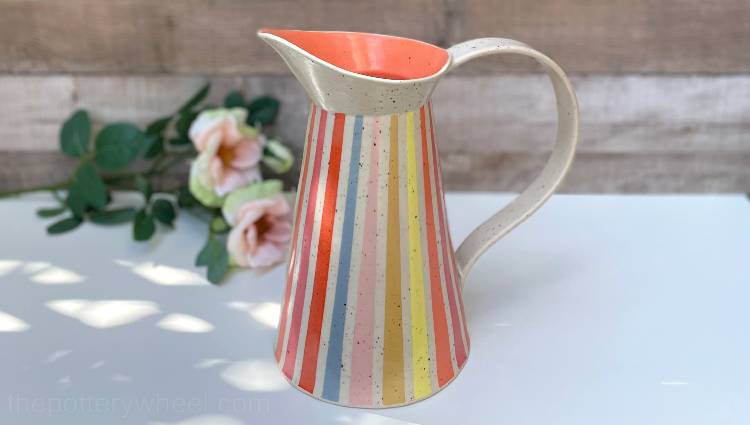Your cart is currently empty!
Why does Pottery Explode in The Kiln? – Avoid Explosions
Published:
Last Updated:
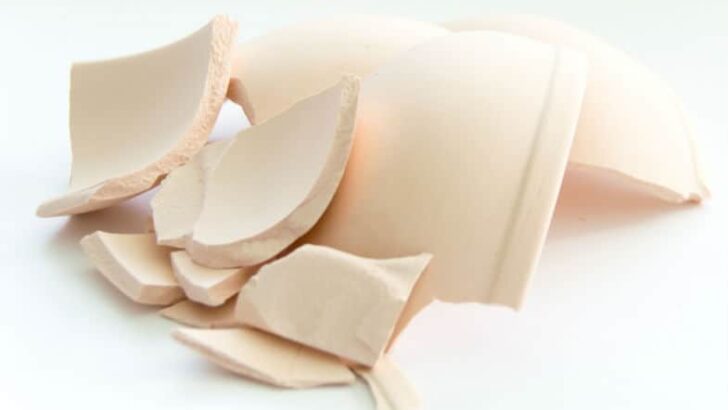
Affiliate Disclaimer
As an affiliate, we may earn a commission from qualifying purchases. We get commissions for purchases made through links on this website from Amazon and other third parties.
Lots of things can go wrong when you fire pottery. Glaze can run, plates can warp, and clay can crack. One of the most dramatic and disappointing things that can happen is that pottery can explode in the kiln. It helps to understand what makes clay explode in the kiln to prevent it from happening.
The main reason pottery explodes in the kiln is leftover moisture in the clay. When the kiln reaches 212F (100C), moisture turns into steam and expands quickly into any air bubbles or gaps in the clay. This puts lots of pressure on the pottery and causes it to shatter.
Reasons Why Pottery Can Explode in The Kiln
If a clay explosion is going to happen, it normally does so in the bisque fire. The reason for this is that before a bisque fire, greenware still has some water content. Even when pottery feels bone dry, it can harbor a bit of moisture nestled in the deeper layers of the clay.
By contrast, after a bisque fire, all of this water will have gone. Moisture is driven out of the pottery during a bisque fire. So, during a glaze fire, residual moisture is not such a problem.
However, other factors can cause pottery to explode at other points during firing. This article will have a look at each contributing factor. Here are the main causes of a kiln explosion…
Factor 1) Moisture in the Clay
It’s often said that air bubbles in clay cause pottery to explode. But, this is only partially true. The main reason why pottery can explode in the kiln is water in the clay.
Greenware may look bone dry, however, even in very dry atmospheres, unfired clay will contain some residual water.
There are two types of water in pottery clay, even when it looks and feels dry:
- Mechanical water or residual moisture
- Water that is chemically bonded to the clay particles
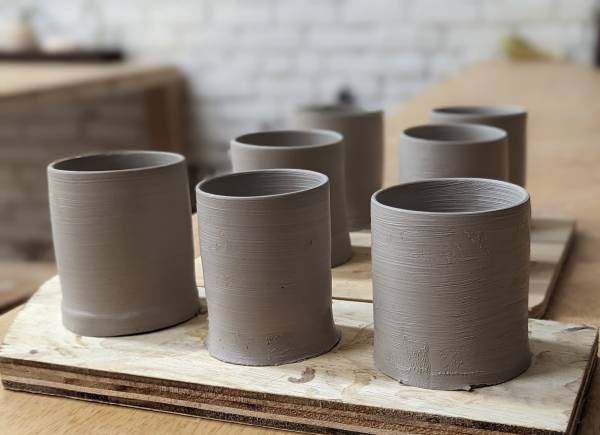
Moisture and chemically bonded water leave the clay at different points in the bisque fire. Mechanical water is also known as ‘free water’. It is the kind of moisture that you might be able to see with your naked eye if you were to split your greenware open.
A piece may look bone dry. However, there is always moisture nestled deeper in the layers beyond the surface area visible on the outside. Even if you weren’t able to see darker clay at deeper layers, it is still there. All unfired clay has some mechanical moisture, even if it’s a tiny amount.
The Water Smoking Stage When Firing Pottery
Free water begins to evaporate when the kiln is in the pre-heating stage. This stage is also known as candling the kiln. When the water evaporates in the kiln, it is called the ‘water smoking stage’.
Ideally, the preheat is long enough so that all of the free water has evaporated. I usually preheat my kiln for a couple of hours before the main firing schedule starts.
During the preheat, the kiln gradually increases in temperature to just below 212F (100C). Once it is just below the boiling point of water it holds there for a couple of hours. This gives the chance for any water to evaporate.
After the preheat, and during the first lower ramp of the firing schedule, the kiln temperature goes over the boiling point of water.
At this point, any residual moisture that has not been smoked out turns to steam and expands. Amazingly, when water turns to steam, it is 1600 times bigger than when it’s in its liquid form (source).
Chemically Bonded Water
This is water that is bonded to the clay at a molecular level. It starts to be driven off the clay body at around 600F. And this continues until about 1100F.
During this process, the clay undergoes a restructure. It is being altered chemically. Once the water has left, it will have changed at a molecular level irreversibly. The changes are significant and need to happen slowly. Pottery can explode at this point too if the water is driven off too quickly.
Factor 2) Air Bubbles
We are often told to wedge our clay to get rid of air bubbles. It’s a popular myth that it is air bubbles themselves that are the cause of clay exploding in the kiln. The idea is that the air expands and puts pressure on the clay causing it to break.
However, the air itself doesn’t expand enough when heated to cause clay to explode in the kiln. Instead, when free water starts to evaporate, it looks for a way to exit the clay. It travels toward the surface of the clay.
If there are air bubbles in the clay the water will evaporate into the bubble cavity. Then as it expands within the bubble cavity, it will cause the pottery to explode in the kiln.
So, strictly speaking, the air bubbles themselves did not cause the clay to shatter. However, they did make it easier for the water to do damage.
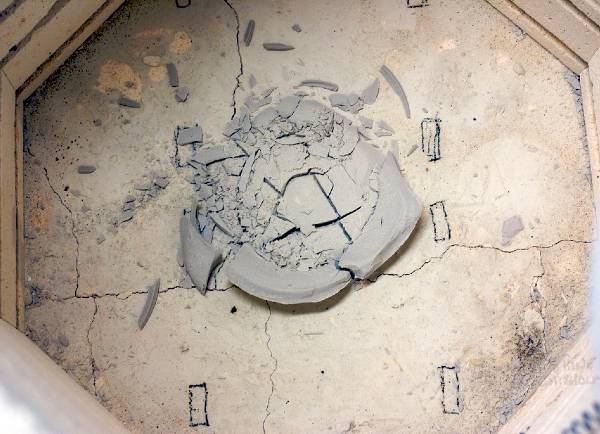
Factor 3) Enclosed Spaces and Pockets of Air
Sometimes pottery has a design that involves trapped pockets of air. For example, you might make a handle on a pot lid that is shaped like a bulb. If the bulb is hollow, it’s a good idea to make an outlet in the handle for steam to escape.
You can make a small hole in the bulb so that the steam can come out. There is normally a way to hide holes like this in places where they can’t be seen. The hole can be hidden, but it needs to be big enough so that it doesn’t close up as the clay shrinks in the kiln.
Factor 4) Thick Walls Can Make Pottery Explode in The Kiln
It’s usually recommended that the walls of your pottery should be no thicker than 1 inch wide. For a lot of pottery, a 1-inch thick wall is very thick. But if you are making a big sculpture or a planter for the garden, then it makes sense to have thicker walls.
Having said that, thinner walls are better if there is any residual moisture in the clay. If the walls are thin, mechanical water has a better chance of moving toward their surface and escaping.
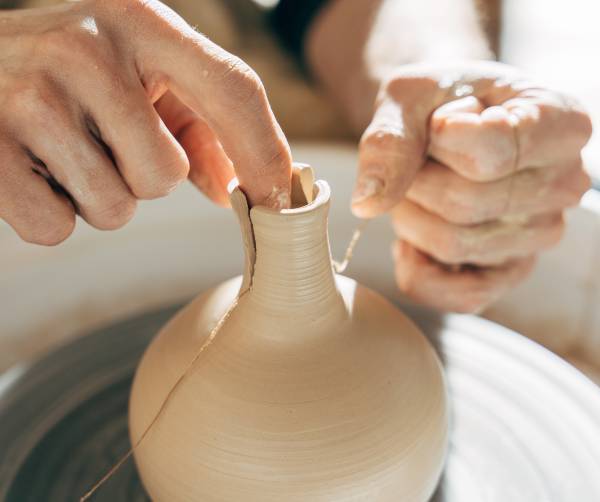
Often when you are starting out making pottery, the walls of your pots will be a bit thicker. Also, it’s the walls of a pot are sometimes thicker at the base than at the rim, when they have been wheel thrown.
When you are learning to throw on the wheel, it’s a very helpful exercise to slice through a freshly thrown pot to see how thick the walls are.
Tip! Slicing through a pot to look at the profile can feel painful, but it is a very helpful thing to do. I learned more from slicing my pots in two than anything else. You can see where the thick parts of the clay are. They are usually on the bottom of the pot and around the base of the walls.
Having said that, if you have made a thick-walled piece, it can be fired safely. If your pieces are thicker, or if you are firing student pottery, remember to leave the pots to dry for a long time. Then use a longer firing schedule with a 2 or 3-hour preheat.
If you follow those steps, you should be able to fire thicker-walled pieces and avoid any clay exploding.
Pre-Heating the Kiln to Avoid Exploding Clay
As a piece is fired, the temperature in the kiln gradually rises. The rate at which it rises and the different stages in the firing process is called the ‘firing schedule’.
Greenware pottery goes through big changes when it’s being fired. The clay needs time to adjust and handle these changes. If the temperature ramps up too quickly, the clay will not cope well and this can cause the pottery to explode.
Pre-heating is an important step to prevent kiln explosions. Whilst I usually preheat for a couple of hours, some potters will candle the kiln overnight to make sure that their pottery is completely dry before firing. This is a good idea if you have made a large piece, with thicker walls.
During a pre-heat, it’s helpful to let the moisture come out of the kiln. You can do this by leaving the plugs out of the peephole on the kiln or by propping the kiln door open just a little to let the moisture escape.
Also, if your kiln is packed very tightly, and contains a lot of greenware, it’s a good idea to candle for a bit longer to let all of the pottery dry out completely.
One way to check whether the pottery is dry is to hold a mirror above an open peephole or by the propped door. If moisture is still leaving the kiln, it will cause a mist on the mirror. If the mirror doesn’t mist up, you have a better idea that the pottery is dry.
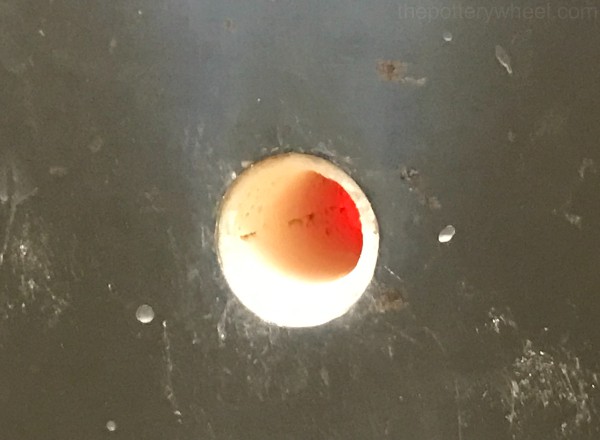
Firing Too Quickly Can Make Pottery Explode in The Kiln
In addition to moisture in the clay, there are other reasons why firing too quickly can cause problems.
These additional reasons are:
Oxidation
Clay bodies contain organic matter and organic matter contains carbon. To change from clay to ceramic, the carbon in the clay needs to burn off. This process needs two things.
Firstly, there needs to be enough oxygen in the kiln to allow the carbon to burn. The carbons also need to be given enough time to burn off.
Oxidation in firing happens between 500 and 2000F. As the carbon is burnt off, it is converted into gases. As the temperature in the kiln increases, the surface of the pottery starts to seal.
If the temperature during this process rises too quickly, the carbon does not have enough time to burn off completely. As a result, carbon and gases can get trapped under the surface of the pottery which has sealed over.
This can cause the ware to bubble, bloat, and crack as the fire continues. It can also, sometimes cause the pottery to explode.
The Quartz Inversion
Another factor that can be the cause of damage to pottery is the quartz inversion. The quartz inversion does not cause pottery to explode but can cause it to crack, particularly as the clay cools down.
Quartz in the clay expands sharply during two stages of the firing. Once, when the temperature is rising, and another time when the kiln is cooling down.
It is called the quartz inversion because it occurs as the temperature rises and falls. And it happens around the temperature of 1064F (573C).
When the temperature rises, the ware still has some plasticity and can withstand the change in the volume of the quartz. However, when the kiln is cooling the ware is more rigid and less able to cope with the strain of the quartz expanding. Cracks are therefore more likely to occur during the cooling part of the schedule.
Problems arise particularly if different parts of the ware are at different temperatures. For example, one part of the pottery may be at 1064F (and therefore expanding) and the other part may be at 1112F. Because one part of the pottery is expanding and the other isn’t the whole piece can be put under strain and crack with the tension.
Cracks are more likely to occur due to quartz inversion if the firing schedule is moving too quickly through the 1064F range.
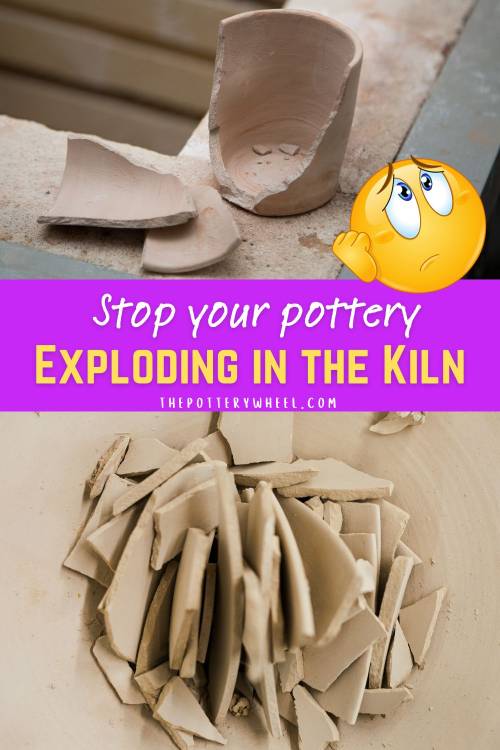
Final Thoughts
Several factors explain why pottery can explode in the kiln. The main culprit is moisture in the greenware.
However, other factors such as air bubbles and pockets, and clay thickness play a role. Another important factor is the firing schedule. If the piece is being fired too quickly, it puts a lot of strain on the ware and explosions are more likely. All these factors need to be taken into consideration to avoid the big bang!

